The famous Ephesus Library was situated to the south of the Agora. This elegant monument was built in A.D. 135 by Julius Aquila In memory of his father, Celsus Polemaeanus of Sardis, Roman Senator and Proconsul of the province of Asia.
After passing through a marble-paved courtyard twenty-one meters wide one reaches the main reading-room by nine wide marble steps. There are four bases for statues at the top of the staircase The floor of the main reading room is built on arched vaults and the inner and outer walls are separated by a corridor, thus protecting the library from damp.
The walls and floor of the room were completely faced with colored marble. Across the main reading room there was an exactly placed niche for offerings; to the right and left of the round niche and on the side walls were square niches containing cupboards to hold the rolled manuscripts. On the front of the Library of Ephesus there was a two-storied gallery.
A section sixteen meters high was very richly decorated with a raised column, door ornaments and sculptural architectural monuments, carving and decoration. These carvings are to be seen in the Vienna Museum.
In a burial chamber in the lower part of the library can be seen a decorated white marble tomb in which Gaius Julius Celsus Polemaeanus was buried. The life of Celsus is related in Greek and Latin on the bases of the statues on each side of the library staircase.
History
The Library of Celsus was comissioned by the Consul Julius Aquila as a mausoleum for his father, Julius Celsus Polemaeanus, Roman governor of the Asian Provinces. It may be that Celsus was granted heroic honors, which would furthur justify the expense.
The monument was constructed between 110 and 135 AD, after which Celsus was buried in a niche on the right side of the back wall.
With a few centuries of its construction a fire destroyed the reading room and the library fell into disuse. Around 400 AD, the courtyard below the exterior steps was converted into a pool. The facade collapsed in an earthquake in the 10th century.
The Library of Celsus was raised from the rubble to its present splendid state by F. Hueber of the Austrian Archaeological Institute between 1970 and 1978.
What to See
Located next to the south gate, the Library of Celsus is 21m wide and over 16m high with a 2.4m-deep portico. The mausoleum-library originally had three stories, with galleries in the upper two stories.
Scrolls and codexes were stored in the niches, dispensed by a librarian. In total, 30 bookcases held about 12,000 scrolls. The reading room faced east in order to take advantage of the best light.
The lower niches of the facade contain four statues, which are through to represent Wisdom, Knowledge, Destiny, and Intelligence. These are replicas of the originals that are now in Vienna.
Latin and Greek inscriptions can be seen among the ruins of the library.
Quick Facts
- Names: Celsus Library; Library of Celsus
- Type of site: Mausoleum
- Faith: Roman
- Status: Ruins
- Dates: 110-35 AD
- Architecture: Classical
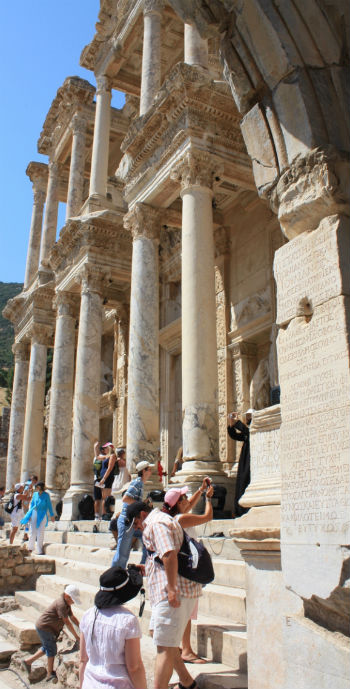
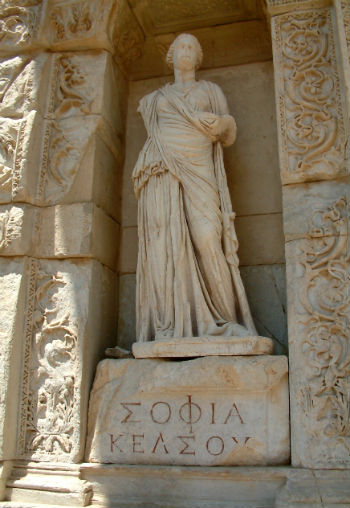
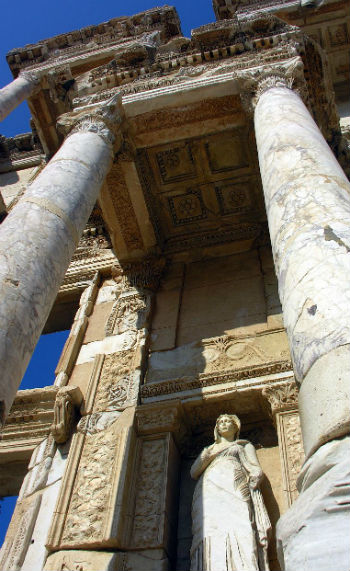
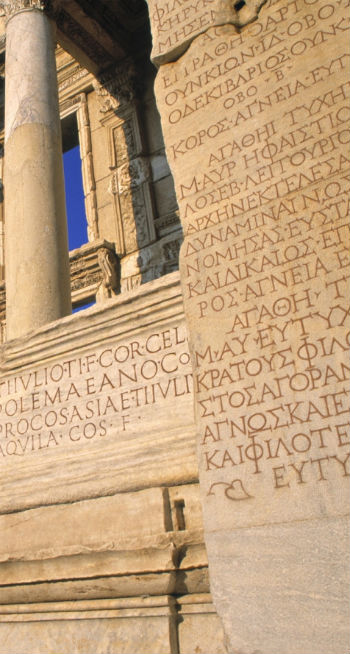
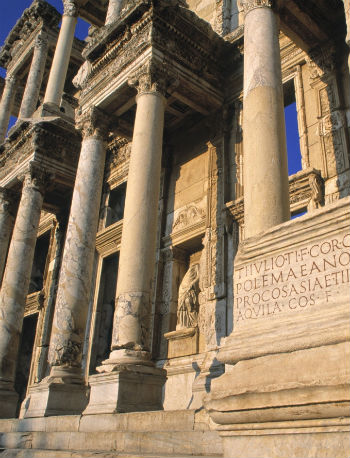
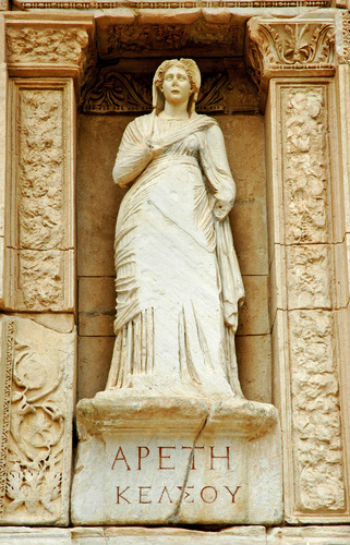
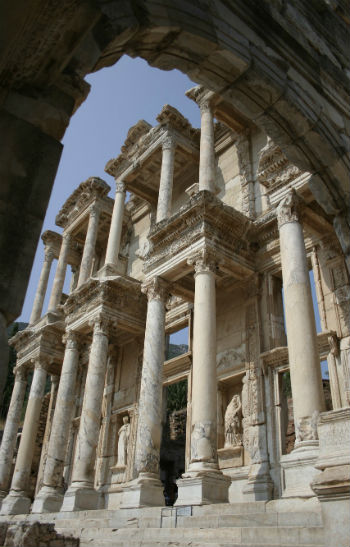


The showpiece of Ephesus. The information from our guide added to our enjoyment. Good photo op. Probably the most recognizable ruin of the area.
Although, I had seen many pictures before visiting, it is amazing to see in person. The scale and detail in the facade are enthralling.
This structure easily dominates the scenery, and looking at it from afar with people gives you the scope of its grandeur. The detail is also impressive, and this site is a highlight of any trip to Ephesus.
Don't miss this incredibly structure. It's beautiful and reminded my traveling colleagues who had been to Jordan of Petra
THis was a highlight, looking down from the top through the arcade to the magnificent library building
This is the most spectacular building on the Ephesus site. We enjoyed walking through the library and reading all the ancient inscriptions. Most importantly for us, the apostle Paul lived in this ancient town for several years. We read his book to the Ephesians in a new light after this tour.
The ruins at Ephesus put the ruins in Athens and Rome to shame. The ancient people had a very rich and sophisticated culture as this library shows. Remarkable condition and they are still uncovering more items at this site all the time. I will let others address the cultural and historical aspects of the site.
Beautifully preserved ruin. Always a big crowd taking photos, no wonder as it`s an impressive and beautiful building even now. I`m told that the statues are not original but well worth a short stop during an Ephesus visit.
Celsus Library did have as many books as Alexandria but it was touted as one of the world's largest none the less. The columns still stand and you can still step inside the walls. If those walls could talk.
This was a restored library in the ancient city of Ephesus. The front has been restored and is a great photo spot, but the interior is not very much to see yet. It is several thousands years old and excavation at the ancient city is relatively recent.